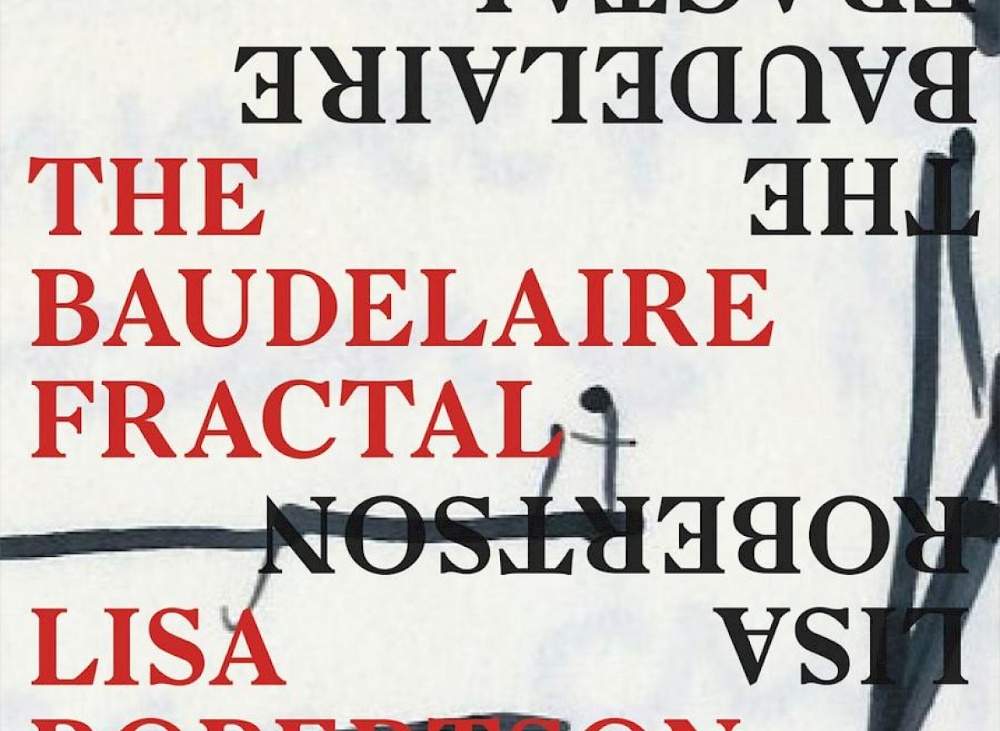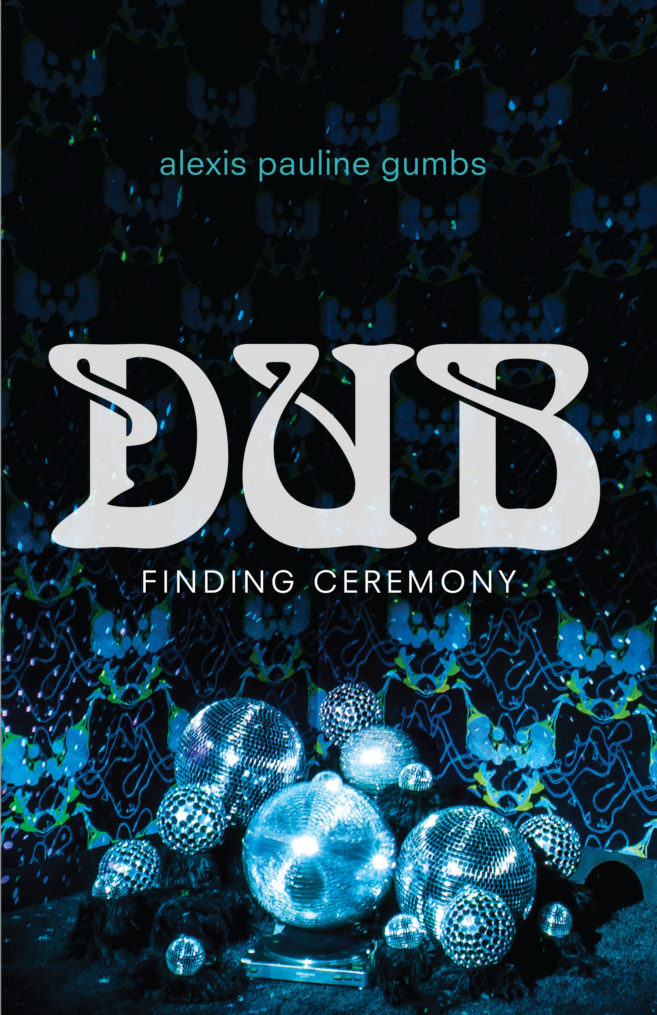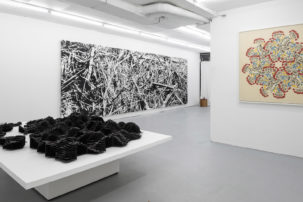I suppose it did not matter to John Updike or Tom Wolfe—to select two figures somewhat at random—that the author died during their lifetimes. Essays proclaiming the fictional, constructed and highly mediated nature of the figure of the author appeared in the late 1960s (Roland Barthes’s essay “The Death of the Author” in late 1967 and Michel Foucault’s lecture “What Is an Author?” in early 1969), heralding a new critical way of thinking about authorship that favoured texts, discourse, media, history, and the social and aesthetic workings of power over the notion of a god-like maker who was capable of foreseeing all possible meanings of His unique and irreplaceable literary masterpiece. Although I’m not sure many people would still refer to Updike and Wolfe as geniuses, the invocation of their names does provide a quick and ready example of what it might have meant to be an author at the dawning of postmodernity: the author’s name was a token in the marketplace, the author a concept (if not a lifestyle) that sold. Perhaps this is still the case today. Barthes and Foucault, since French and therefore forged in an education system that fetishized and, in my own limited experience, still fetishizes canonical works with a level of detail and myopia that few Americans past or present would be likely to relate to, were aiming at something other than Updike or Wolfe. They were less concerned with the bestsellers of their day than with a longstanding cultural practice: that of eliding the feeling and social conditions of the present to promote a fantasy about timeless omnipotence and capital-T truth. Barthes had a specific recommendation regarding what should be done. Classical literature, he writes, has never paid much attention to the reader; now, he says, let’s—let’s make way for the birth of the reader.
There’s a sense in which Barthes’s exhortation appears to have been taken up by culture and technology at large (here I refer to the existence of the World Wide Web, where end users, a.k.a. readers, abound). However, it is my intuition that we remain within a paradigm in which authors have by and large retained a certain cachet. Questions are posed in various media outfits about the author’s mysterious process, which is to say, about the author’s desk setup as well as how biography plays into the author’s creations. The contemporary author is generally relatable, but, like the actor or celebrity athlete, with a slightly inhuman twist: The author is a “true” artist, not a hobbyist or aspirant. The author has been confirmed as “the,” not “a,” writer. It’s an apparently minor difference of articles that still seems, these days, to make all the difference. Often entire books are devoted to the task of establishing—with what the writer appears to hope will be adamantine and immortal permanence—this difference.
Lisa Robertson’s new novel, The Baudelaire Fractal, could be taken to be such a book. It follows in the tradition of autofictions I have liked a lot (Kathy Acker, Chris Kraus), as well as some that I have not preferred, providing an account of a Canadian writer’s expatriate youth in Paris in the mid-1980s. It is not easy to summarize The Baudelaire Fractal, so please forgive my slightly awkward try: After a reading in Vancouver, a poet named Hazel Brown wakes up in a hotel room to discover that she has been transformed, perhaps overnight, into the author of the works of the French Symbolist poet Charles Baudelaire. At this point, Brown might be in her forties. She remembers this event, this metamorphosis, from the vantage of her late fifties and then also recalls her much younger days, previous to the change (the aforementioned Parisian period). This complex anamnesis is interspersed with reflections on: the life of Charles Baudelaire; the life of Jeanne Duval, Baudelaire’s lover; the painter Gustave Courbet, among other painters and artists of the Third Republic; and tailored jackets. At the novel’s conclusion, Hazel Brown thinks about Édouard Manet’s portrait of Duval, pondering from the vantage of 2019 its depiction of “the immense, silent legend of any girl’s life.” It becomes apparent that the preceding episodes concerning Brown’s life have been intended as a similar, if somewhat less silent, myth. And, if I am understanding matters correctly, it would appear that Brown’s legend is somehow certified or rendered more distinct by its brush with Baudelaire’s weird, disembodied authority.
A note on that floating authority: The transformation is introduced on page 16 of my edition, in the second chapter. The novel does not begin with this incident, and the metamorphosis remains largely unaddressed for the remainder of Robertson’s narrative, until page 135, when it makes a brief second appearance, only to slip from view once more. Brown, who speaks in the first person throughout the book, is specific: It is not that she became Baudelaire himself (“This is obviously very different from being Baudelaire, which was not the case, nor my experience”); rather, that she is now the author of his writing. Brown possesses the spiritual, if not the legal, copyright to all of Baudelaire’s graphic output, “Even the unwritten texts, the notes and sketches contemplated and set aside, and also all of the correspondence, the fizzles and false starts and abandoned verses, the diaristic notes: I wrote them.” Brown did not live Baudelaire’s life, does not look like him, is neither a time traveller nor a historical reenactor, and yet: all that he wrote, she has in fact written.
This is an interesting proposition, one that inspires a series of questions concerning, as Foucault put it, “What is an author?” Is receiving the credit and/or responsibility for Baudelaire’s writing like having a superpower, or is it a curse? Does it mean that Hazel Brown now possesses the magic diction, rapturous rhetorical talent, mastery of prosody and unfailing eye for detail that animate Baudelaire’s verse and prose? Does it mean that Hazel Brown is now due the same celebrity that has, historically speaking, been accorded Baudelaire? Does Brown experience Baudelaire’s hatreds, fears and resentments—the unease that rumbles beneath his sinuous turns of phrase and infernal mastery of form? In other words, we want to know if Baudelaire’s authorship is not merely or exactly a gift, but also an imposition, if it might not in some way interrupt Hazel Brown’s attempt to become the author of the works of Hazel Brown. It is inconvenient, to be sure, that Baudelaire (“not as socially expansive as his own construction of erotic beauty”) was frequently a jerk.
It would be nice if The Baudelaire Fractal addressed these questions. However, unlike other transformation tales—in which the protagonist receives a more visible othering, into, say, a cockroach (Kafka’s well-known story), a giant mammary gland (Philip Roth’s The Breast), a donkey (Apuleius’s The Golden Ass), a pig (Marie Darrieussecq’s Truismes), a woman (Virginia Woolf’s Orlando) or many, many other entities (Ovid)—we never find out how the transformation affects Brown. In part, this is due to Robertson’s choice to have most of Brown’s account take place before the authorial switch, when she is still an unknown poet working odd jobs in Paris and, presumably, still the author known as Hazel Brown, unenhanced by vintage spleen. In later life, Brown seems to spend most of her time taking meditative walks with her dog and savouring the agricultural offerings of the French countryside, distinctly un-Baudelairean activities, if Brown’s descriptions of the life and times of Baudelaire are accurate. Thus, Brown’s metamorphosis remains local to the moments where it occurs, on the page. In this sense, it is less a metamorphosis than a claim.
The other difficulty with The Baudelaire Fractal is that Brown’s/Robertson’s research into Baudelaire’s life and circle, research which is deployed as proof of Brown’s (and possibly Robertson’s own) authority, mainly serves to support the notion that Baudelaire was an exceptional individual who, although flawed, was possessed of remarkable taste and aesthetic insight—he, for example, “poured drops of musk oil from a small glass vial onto his red carpets when he entertained his friends in his baroque apartment.” If the novel seems to position itself to explore Baudelaire’s authorship as a historical, social or literary phenomenon, particularly as regards the politics of gender, race and even the legacies of France’s colonialism, it struggles to make good on that ambition, with questionable assertions about Baudelaire’s life with Duval such as, “They were together, loving and fighting and talking, for twenty-one years.” Every few pages a parade of additional luminaries appears, and near the close of the novel we are fielding anecdotes about Albrecht Dürer’s Melencolia I, along with news of an essay on rhythm by the linguist Émile Benveniste, among other miscellaneous items. These are interesting citations, drawn from the canon of comparative literature as imagined in the Anglophone world via the criticism of Erich Auerbach, among others. However, these glimpses into graduate curricula of the 1990s and early 2000s do little, in their current form, to illuminate Hazel Brown’s situation.
For me, the best scenes in The Baudelaire Fractal belong to the Brown of the ’80s, who takes up residence in a series of chambres de bonne after having obtained British citizenship via a technicality (her father’s birth and brief infant stay in the UK). Among these, the most dramatic illustration of Brown’s status as a “girl” is neither an incident when her young lover batters and chokes her, nor when he asks her if she would “care to be prostituted.” Rather, it is a job she acquires by way of an encounter with a random middle-aged bourgeois in a bookshop. Brown is assigned the task of collecting the man’s daughter at school, conveying her home and then ironing and dusting while the child eats her lunch. This intimacy with elaborate, moneyed domesticity gives rise to a series of realizations about gender and labour, as well as the styles of private property traditional marriage entails, with the upper-middle-class wife’s role “so vast, so specialized, thorough, complex, and ornate all at once, that no single woman could perform the entire task.” Brown is briefly “one small component” of this juggernaut of “erotic catastrophes…family histories and political damages.” I found myself rapt as Brown describes a moment when Brown’s employer shows her his key ring, hung with keys to his multiple mistresses’ homes. What Brown doesn’t spell out is that this gesture is at once a proposition and a threat; I imagine there are few among us who haven’t met such a Bluebeard, in one workplace or another. Brown, who notes that she is incapable of smiling and going pleasantly about her work, is inevitably let go. Useless as a servant, in no small part because she would be impossible to add to Bluebeard’s collection, Brown cleverly fails the grooming period. Yet fresher material like this struggles against the novel’s many lugubrious commonplaces: Paris itself, the “artist’s studio” and the notion of The Great Poet, not to mention the much-rehashed histories of Baudelaire’s circle, Courbet, Manet, et al.
A final difficulty, the most significant one, to my mind, is that while Robertson writes sublime prose, with The Baudelaire Fractal she has done little to engage the form or history of the novel—an unusual sort of oversight for her, given her poems and essays are so intimately involved with interrogation of genre and form. Decorative, exhortatory writing that works well in poems crops up here from time to time and seems out of place. There are a number of hyperbolic calls to the reader—“The sexuality of sentences: Reader, I weep in it”—that fall flat, along with asides that seem designed to extract the reader from a sometimes bewildering temporality. The Baudelaire Fractal could have been a fantastic essay or prose series. It does not really work as a novel or narrative, not because it lacks “arc,” whatever that is (and I despise this sort of stale critique of experimental writing), but because its fragments and spirals of thought have been relentlessly assimilated via pastiche—with everything held together, apparently, by the mysterious connection to Baudelaire. I was disappointed by this choice, what seemed to me a deliberate decision to de-emphasize the significant and even beautiful discontinuity present in this writing.
But even given my disappointment with The Baudelaire Fractal, I have struggled to write this review. I deeply admire Robertson and the conversation she and others have cultivated around her writing. Indeed, openly critical remarks about art and literature often feel like a losing battle, and I’m always reminded of Joan Didion’s curt response to one supercilious critic, “Oh, wow.” Over her 30-year career, Robertson has done much to shape contemporary Anglophone poetics. She has written a style of poetry and prose that is not precisely “anti-lyric,” that is, unquestioningly opposed to the conventions of first-person speech and the arabesques that emerge out of attempts to imitate or cite Romantic, neo-classical and classical contexts—which have tended for several centuries now to cannibalize themselves in cute dreams of authenticity (lyres, urns, shepherds with flutes, landscaped estates with fainting mistresses). Robertson’s project is instead a form of “research” into the lyric, its effects, conventions and underpinnings, “work that change[s] the rhetorical conditions of I-saying.” The authority—and authorship—that Robertson has seemed to imagine for herself in past books has been plural as opposed to monolithic; complex, engaged and seductive, rather than given to tropes and filler.
The late art critic Maurice Berger, who passed away in our current health crisis at the age of 63, was a fantastic reader of Roland Barthes, and I think some of Berger’s observations about Barthes’s own relationship to authorship are à propos here. Berger writes, in an essay on Barthes and love published in Artforum in 1994, “[Barthes] was the ultimate flaneur: the ‘I’ that he uttered seemed always to evaporate, to blend into the space around him.” Berger also notes that Barthes was not always the best student of Roland Barthes, that Barthes sometimes lost sight of his own critical goals, “indulging in the very bourgeois delusions he sought to demythologize.” Something similar seems to have transpired here, in that in composing The Baudelaire Fractal, Lisa Robertson has slid into a major blind spot, becoming the very sort of (pre-canonized) author she had seemed, in the past, to write in ingenious distinction, if not direct opposition, to. This leaves me, the reader, with a dilemma. On the one hand, I want to applaud Robertson’s assumption, via Hazel Brown, of a mantle that so many male writers have taken up with casual entitlement; on the other, I feel somewhat betrayed. Even Robertson seems uncertain as to the meaning of the Baudelairean switcheroo, perhaps the reason that her novel barely mentions the transformation the jacket copy claims is at the centre of the work. I find myself coming to a conclusion that seems strangely absent from The Baudelaire Fractal, for reasons that I am still unable to divine. My thought is this: if, as for Hazel Brown and by this narrator’s own account, “all [our] predecessors [are] erased,” then we must actively choose and create what we become—and struggle against mere philology, by which I mean, unconsidered inheritance and repetition.








